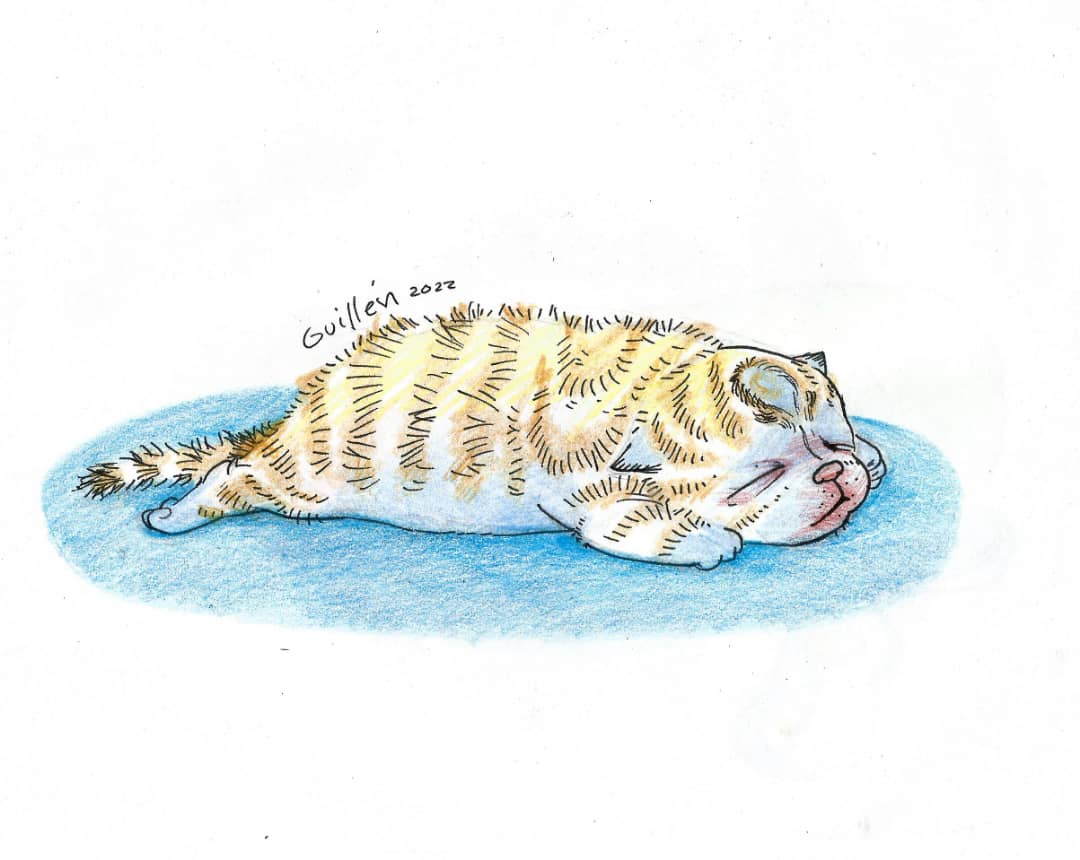How many times have we not found litters of newborn kittens? We rarely know if it was the mother who abandoned them or if an insensitive human threw them out on the street because he didn’t want any more cats in his house. But in this situation we cannot spend too much time identifying the cause of abandonment; You have to run fast to try to save them. In those cases, we almost always find the kittens with symptoms of excessive debilitation.
The “weakened puppy syndrome” refers to the affectation that puppies have during the first two weeks of life and contains a series of diseases that can lead to death.
The neonate is an individual who is born immature per se and has, together, a neurological immaturity, an immunological immaturity, a thermoregulatory immaturity and a metabolic immaturity.
Neonatal losses are primarily caused by a combination of environmental, infectious, nutritional, and metabolic factors.
Newborn kittens, that is, from birth to the fourth week of life, are susceptible to this syndrome due to their immature liver function and rapid depletion of glycogen stores. During this time, hypoglycemia or dehydration rise when there is vomiting or diarrhea. These kittens have very deficient fluid compensation mechanisms and immature kidney function at that time and it is because of them that the risk of dehydration is greater.
For a kitten to be properly hydrated, the mucous membranes must be moist and light red or pink in color and she must also produce urine and feces after each meal. Every time the kitten suckles, it must urinate and defecate.
The place where the kitten is should have a humidity around 55 to 65% to help reduce additional losses of excess fluids and thus reduce the risk of dehydration.
One of the causes for the development of the Weakened Puppy Syndrome is because neonatal hypoxia occurs. For hypoxia to occur, there may be an interruption of the blood exchange that occurs through the umbilical cord with the mother. When this happens, the puppy must oxygenate itself. This hypoxia can also occur due to placental abruption or because there are alterations in childbirth, whether it is prolonged, premature or difficult. With all this, the utero-placental union is fundamentally affected and the exchange of nutrients and the exchange of oxygen through the umbilical cord is affected.
Fetal hypoxia can have an effect on different organs.
In the cardiocirculatory system it can cause ischemia in the myocardium, increases pulmonary blood pressure, decreases glycogen stores and alters heart rhythm.
At the level of the respiratory system, it causes dyspnea, edema, increased pulmonary pressure, decreased production of pulmonary surfactant, which in turn will produce a greater alteration in the respiratory part.
In the Central Nervous System a depression will occur and in the digestive system there will be a decrease in meconium, enterocolitis and gastric distention.
Fetal hypoxia acts on all the organs of the organism producing alterations and insufficiencies that accelerate the process of degradation of the fetus until it reaches death.
What are the symptoms of hypoxia in the newborn puppy?
In the first place, the puppy presents apnea, that is, respiratory arrest. There will be cyanosis that can be easily seen in the extremities of the newborn puppy. cyanosis. If, as time progresses, the paleness with which the puppy is born does not turn into an intense pink, then you are facing a problem of lack of oxygenation of the puppy that can lead to its death.
Hypoxia also produces bradycardia and also hypothermia, the body temperature begins to drop. The lethargy or weakness becomes greater each time that produces an ileus at the level of the intestine with accumulation of fecal matter and gases causing abdominal distension. Diarrhea also occurs, which increases dehydration and gastric distension. All in all this is going to increase the possibility of death of the newborn.
What symptoms does the puppy present with Extinguishment Syndrome?
A characteristic symptom is the constant noises as a sign of anguish that the puppy presents, it does not stop whining or crying. He cries even after eating. Suck little, eat little amount of food. He goes into lethargy that increases as this syndrome develops.
The puppy stops sucking, taking in nutrients, taking in liquids. You do not gain weight, maintain your normal body weight or lose it.
In it we can notice a significant difficulty in breathing. Vomiting continues and diarrhea with nasal or ocular secretions is fundamentally observed.
What causes can lead directly to a Burnout Syndrome?
In the first place, dystocias or difficult births. Long deliveries with premature placental abruption with fetal distress. This leads to the puppy having hypoxia and being born very weak and without the desire to suck and with respiratory difficulty. This leads to a decrease in fluid infestation and a decrease in circulating volume.
Maternal antibodies, which are responsible for defenses or protect the immature immune system of the newborn during the first two months of life, also decrease. This can increase the puppy’s sensitivity to bacterial or viral infections. The first twelve hours of a newborn puppy’s life are key when it comes to colostrum intake because they are ingesting the whole antibodies. After twelve hours there is an enzymatic maturation that causes the digestive enzymes to unfold the immunoglobulins and they are incorporated directly as protein precursors and not as true defenses. These immunoglobulins are the ones that will maintain the newborn’s immune system for the first two months of life.
At birth, malformations can also be present that are causes of Fading Syndrome. They can be heart defects, gastrointestinal defects, brain or lung defects, etc.
Low birth weight is an important cause, so try to reverse it as soon as possible.
Also during childbirth traumas can occur that produce alterations in the development of the puppy.
Another important cause is maternal misbehavior. Those mothers who do not lie down together with the puppies so that they can suckle, get warm. It is important to keep in mind that the puppy needs warmth from the mother to maintain her body temperature.
Maternal misbehavior can be due to neglect or excessive maternal behavior. In the case of the cat, due to stress situations due to a bad place where they are, she moves away from her puppies and they get cold. Sometimes few puppies are born and the excess of licking from the mother keeps it too wet and can cause the puppy’s body temperature to drop and be the beginning of the Fading Syndrome.
Among non-infectious problems, the most common we have are environmental problems, which is why the management of the mother and her puppies should be reviewed.
The affected puppy should be isolated from the rest. It must be warmed up so that it reaches its body temperature above 37°C. They must be hydrated orally or parenterally. You can use the subcutaneous route with sodium chloride or, if not, use the intraosseous route or through the jugular route, administer Dextrose or Ringer’s Lactate. Antibiotics are administered according to the pathology they may have and specifically beta-lactams. To prevent bleeding, they are given Vitamin K. The latter is administered at a rate of 0.01-0.1 mg subcutaneously or intramuscularly.
The warm-up of the puppy should be slow. A rapid heating will alter the cardiorespiratory function that can lead to death by arrest. For them it is good to use thermal blankets at the lowest temperature. In our conditions, we use other options such as bottles with hot water that does not directly touch the animal. A temperature greater than 36.5°C should be achieved in approximately 3 hours.
The puppy should be placed in an average room temperature of 32°C with 55-65% relative humidity and 30-40% oxygen.
To hydrate it, a solution of 50% Ringer’s Lactate and 50% Dextrose 5% can be administered. You can use 1 ml every 30 grams of weight subcutaneously or peritoneally warmed up previously and adequately. So that when it enters, it does so at a temperature of approximately 30°C and does not collaborate with the cooling of the puppy.
Orally or by tube, a 5% glucose solution can be administered at a rate of 0.25 ml every 30 grams of weight.
Appropriate dairy supplements may be given. But it is very important to keep in mind that this should not be administered until the puppy has reached a temperature of 37°C. Without an adequate temperature, the milk will ferment in the stomach because it does not have the temperature or the enzymes necessary to cause food degradation and the subsequent death of the puppy can occur.
Emergency protocol:
- Provide warmth: Wrap the kitten in a blanket or towel, always leaving her face exposed.
- Increase blood sugar with the methods explained above.
- If the kitten has not improved within an hour the chances of survival are poor.
The puppy’s prognosis is variable. It depends on the pathology and your condition and the speed with which you are treated.


















